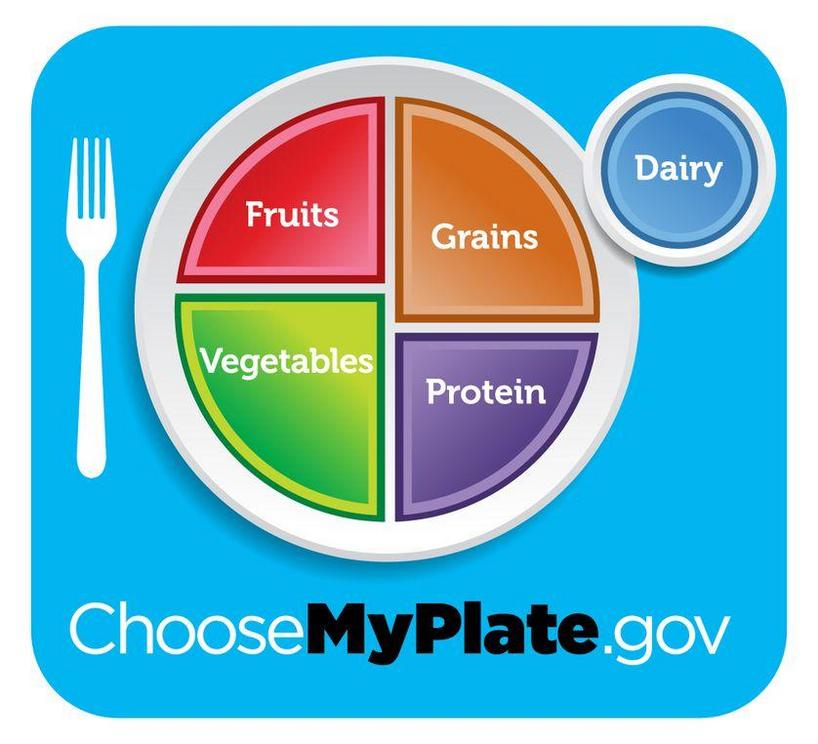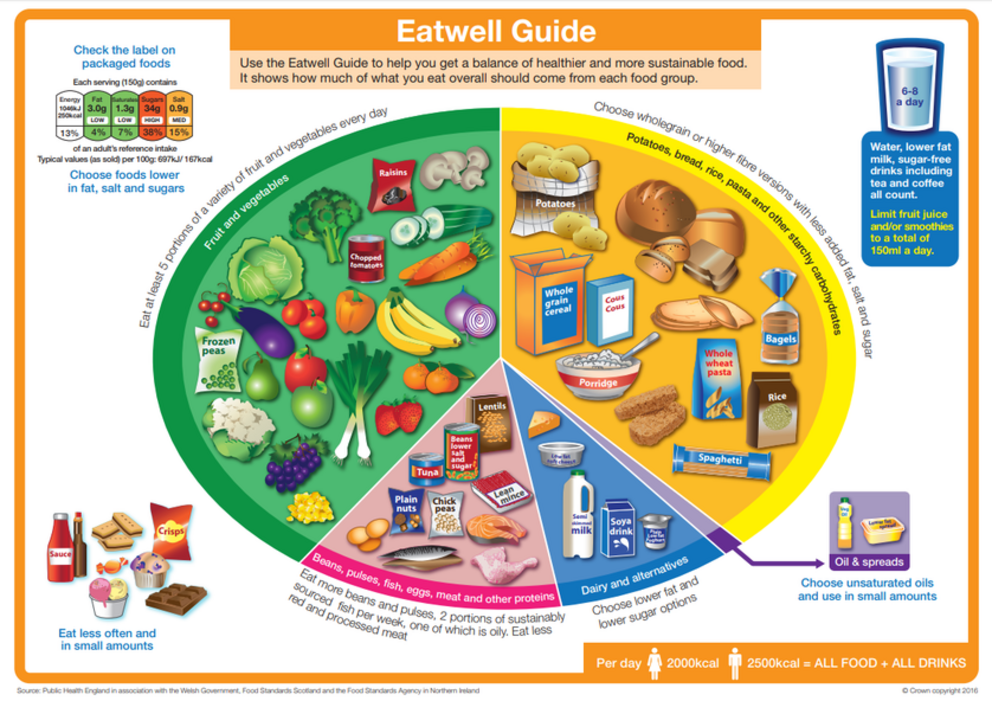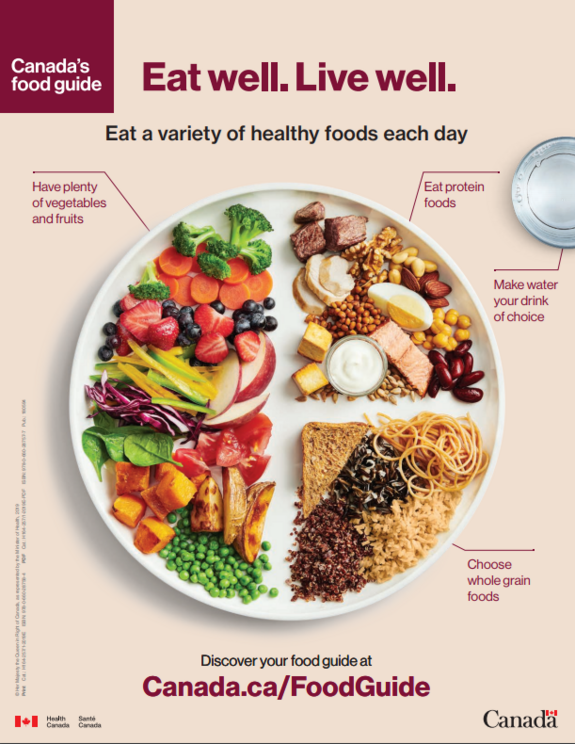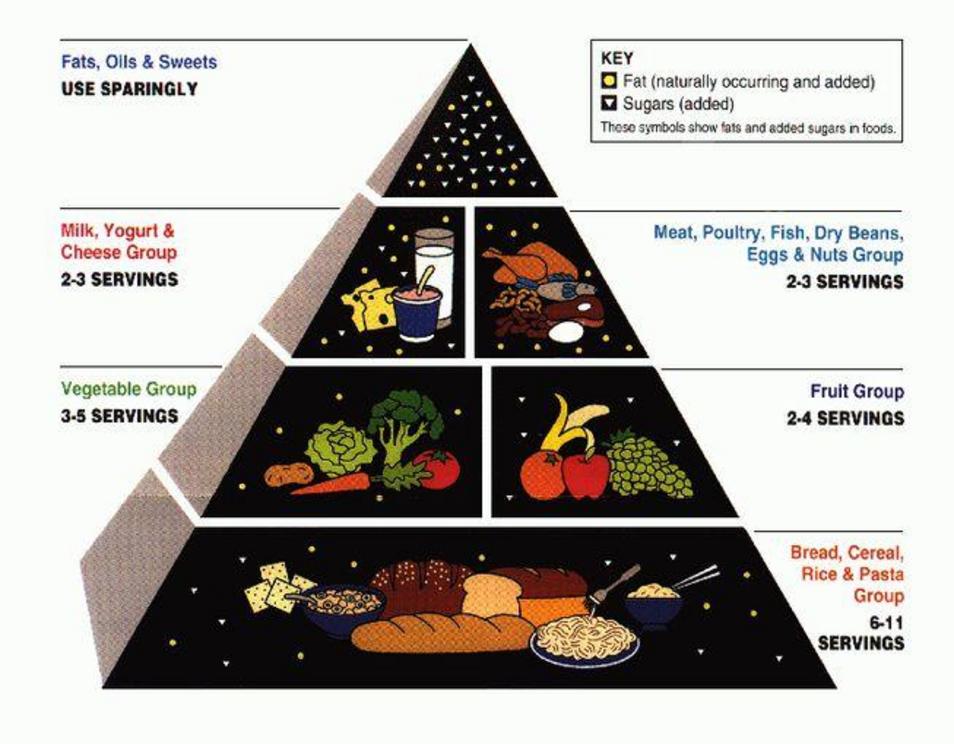Food pyramids change with time and place but the goal is the same: eat well
Unless you're really young, you probably remember the Food Pyramid. It was released by the U.S. Department of Agriculture in the early '90s as a nutritional educational tool to offer guidelines about the type and quantity of different foods to eat each day.
It was relatively simple to figure out. Foods that were shown in the larger wedges of the pyramid were the ones you should eat the most of and the ones at the top were the ones you should eat sparingly.
 MyPyramid replaced the USDA Food Pyramid.
MyPyramid replaced the USDA Food Pyramid.
The pyramid was later redesigned as MyPyramid, which had vertical stripes of color representing food groups but also included an image of someone walking up the stairs of a pyramid to stress the importance of adding exercise to your day.
It was a little more difficult to read, as the food groups were just piled at the bottom of the pyramid in seemingly random amounts.
 The USDA's MyPlate replaced the Food Guide Pyramid in June 2011.
The USDA's MyPlate replaced the Food Guide Pyramid in June 2011.
Things got a little more practical in 2011, when the USDA ditched the pyramid for MyPlate. This time, food was shown on an actual plate, with fruits and vegetables taking up half the space, and grains and protein making up the other half. There's a glass to represent dairy. You can customize the plan for your age, height, weight and activity level so you know exactly how many calories and servings you should eat each day.
These are the nutritional guidelines that are in place today for Americans. When you go to the specific plan, you'll find recommendations for exactly how many cups or ounces you should eat from each food group, as well as examples of each.
For example, most people need 1 1/2 cups of fruit each day. One cup from the fruit group counts as:
- 1 cup raw, frozen, or cooked/canned fruit or
- 1/2 cup dried fruit or
- 1 cup 100 percent fruit juice
In fact, the concept of the food pyramid was embraced around the world, as MNN's Robin Shreeves explained in her tour of food pyramids around the globe.
The basic concepts are the same, but it's interesting to see which ones translate the best, especially when they change, as they inevitably do.
Eating well in the U.K.
 The U.K.'s Eatwell Guide divides what we eat and drink into five groups.
The U.K.'s Eatwell Guide divides what we eat and drink into five groups.
The U.K. has a similar nutrition guide but the main illustration has a lot more detail. The Eatwell Guide replaces a plate-like diagram and now shows how much you should eat from all food groups with lots of examples of each. Some of the food groups offer specifics. For example, it suggests you should eat at least five portions of fruits and vegetables each day. For other categories, the guidelines are more general. Starchy food should make up about one-third of the food you eat and you should choose whole-grain or higher-fiber options when possible.
Some of the main tenets of the guide are:
- Eat at least five portions of a variety of fruit and vegetables every day.
- Base meals on potatoes, bread, rice, pasta or other starchy carbohydrates, choosing whole-grain versions where possible.
- Have some dairy or dairy alternatives, with a focus on lower fat and lower sugar options.
- Eat some beans, pulses, fish, eggs, meat and other proteins (including 2 portions of fish every week, one of which should be oily).
- Choose unsaturated oils and spreads and eat in small amounts.
- Drink 6-8 cups/glasses of fluid a day.
Making portions easy to understand
 The British Nutrition Foundation uses hands to help show portion sizes.
The British Nutrition Foundation uses hands to help show portion sizes.
Nutritionists in the U.K. recently decided to help make this advice more practical. The British Nutrition Foundation released information on portion amounts and portion sizes meant to complement the advice in the Eatwell Guide. Some of the group's suggestions include:
Portions:
- Fruit and vegetables: 5-plus portions per day
- Starchy carbohydrates: 3-4 portions per day
- Beans, fish, eggs, meat and other proteins: 2-3 portions per day
- Dairy and alternatives: 2-3 portions per day
Portion sizes:
The group offered practical measures using hands and spoons to help get an idea of sensible portion sizes.
- 2 handfuls of dried pasta shapes or rice
- A bunch of spaghetti, measured using your finger and thumb
- The amount of cooked pasta or rice that would fit in two hands cupped together
- A baked potato about the size of your fist
- About 3 handfuls of breakfast cereal
- A piece of grilled chicken breast about half the size of your hand
- A piece of cheddar cheese about the size of two thumbs together
- About 1 tablespoon of peanut butter
- About 3 teaspoons of soft cheese
"Most of us probably don't think about portion size when we eat — it typically depends on what we would usually have, how hungry we feel and how much is in a pack or on our plate," the group said, in announcing the portion information. "But having a healthy, balanced diet is about getting the right types of foods and drinks in the right amounts."
Canada makes a real plate
 Canada's food guide shows actual foods on the plate.
Canada's food guide shows actual foods on the plate.
Similarly, Canada's Food Guide tries to make nutrition easy to follow for consumers. The image on the cover features a plate, but this is no illustration. It's a photograph with real food piled in each area, showing lots of examples of what you can eat. It's also easy to understand that you should fill half your plate with fruit and vegetables and one-quarter each with proteins and whole grains.
The guide does not suggest a specific amount of servings. Among the recommendations in the guide:
- Choose protein foods that come from plants more often.
- Choose foods with healthy fats instead of saturated fat.
- Limit highly processed foods. If you choose these foods, eat them less often and in small amounts.
- Make water your drink of choice.
The guide also includes advice on how to eat, whether preparing food or when dining out:
- Choose healthier menu options when eating out.
- Read food labels.
- Be aware that food marketing can influence your choices.
- Prepare meals and snacks using ingredients that have little to no added sodium, sugars or saturated fat.
In addition the guide offers advice like "cook more often," "eat meals with others" and "enjoy your food."
We've come a long way since the days of the basic food pyramid.

